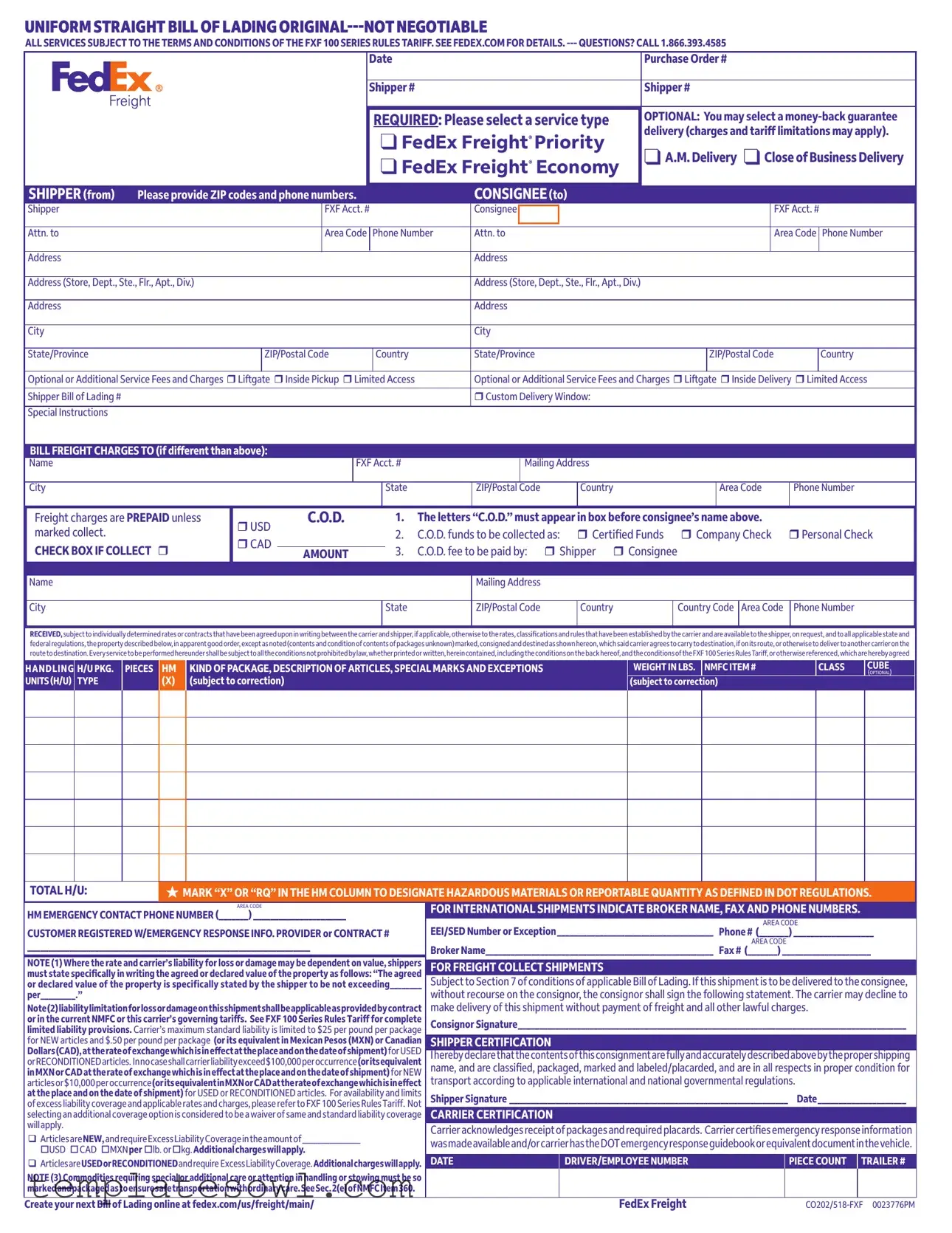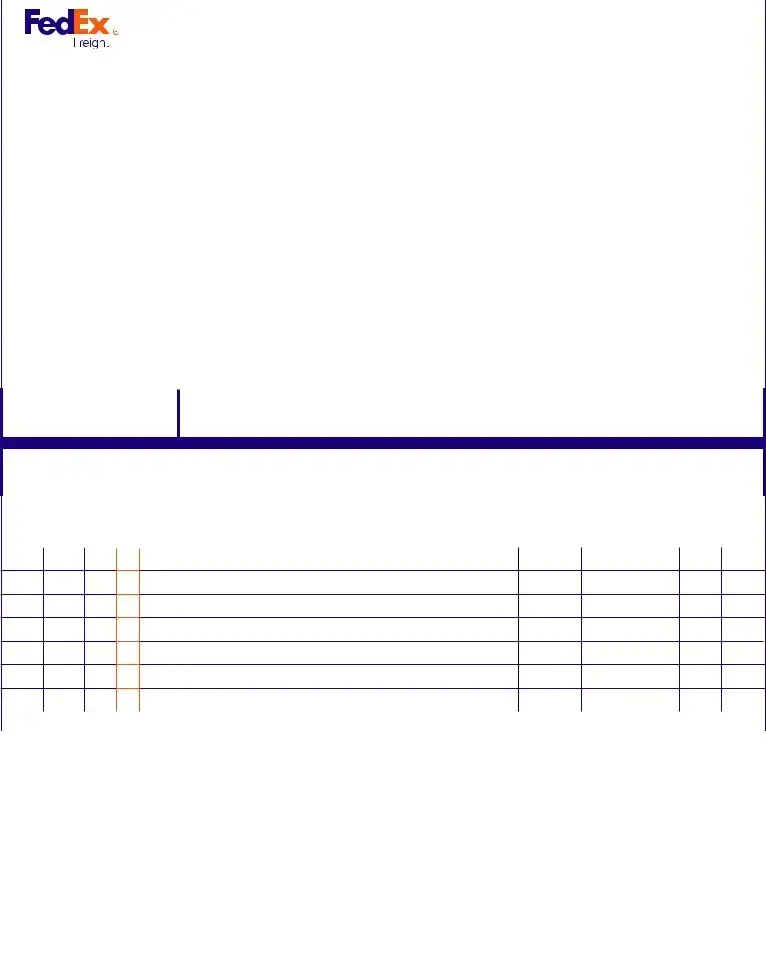What is a FedEx Bill of Lading?
A FedEx Bill of Lading (BOL) is a crucial shipping document that serves as a contract between the shipper and the carrier. It outlines the details of the shipment, including the shipper’s and consignee’s information, service type, and any additional charges. This document also confirms that the carrier has received the goods in apparent good order for transportation.
When do I need to use a Bill of Lading?
You should use a Bill of Lading whenever you are shipping freight, especially for items that are larger or require special handling. This is important for tracking purposes and serves as a receipt for the goods being shipped. The BOL will be required not just by FedEx, but also by federal regulations, ensuring compliance during transportation.
What information must I provide on the Bill of Lading?
When filling out the Bill of Lading, you’ll need to provide comprehensive information, including the shipper’s address and contact details, the consignee’s address and contact information, details about the freight (like weight, dimensions, and description), and any special instructions or service type selected. It’s essential to ensure that all information is accurate to avoid delays or issues in delivery.
How do I choose additional services on the Bill of Lading?
The form includes various optional services, such as liftgate assistance, inside pickup, and limited access delivery. To select any additional services, simply check the appropriate boxes on the BOL form. Keep in mind that these services might incur extra charges, so be sure to review the terms and conditions related to these options.
What if I want to use C.O.D. on my shipment?
If you wish to use Collect on Delivery (C.O.D.), you must mark the C.O.D. option on the Bill of Lading and specify the amount to be collected upon delivery. You can also indicate how you want the payment to be made, whether through certified funds, company checks, or personal checks. This option adds a layer of security by ensuring payment is made before the goods are transferred.
How can I track my shipment using the Bill of Lading?
Tracking a shipment can be easily done by using the tracking number that is typically generated and provided upon completion of the Bill of Lading. You can enter this number on the FedEx website or through their customer service lines to get real-time updates regarding the shipment status.

